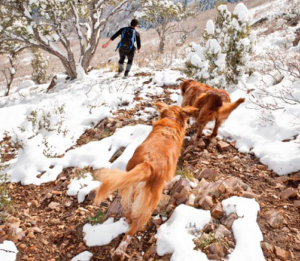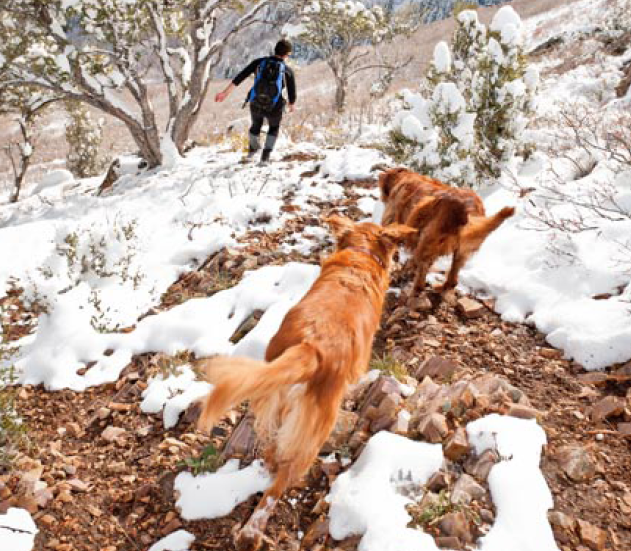
New research proves why dogs and humans are such a perfect fit.
Keeks is our five year-old golden retriever. She is calm most of the time and loves people, especially children. But she is also extremely hard-headed and stubborn. We call her “Princess” for good reason. She obeys when she feels like it, and most of the time we obey her. She is so beautiful that she can use her beauty to charm us or others to get what she wants. Her soft gorgeous fur, which she so generously presents to us to pet, always make us quickly forget the times she has plopped down in parks or sidewalks, requiring us to either carry her home or wait until she is ready to leave.
Louie is our eight year-old Irish setter. He is extremely devoted — he is my duder (I am the dude and my duder does my bidding). He is my shadow, always at my side when I am at home. Full of energy, Louie can run non-stop for miles without showing any fatigue. But he is also extremely affectionate and sensitive to both emotional and physical pain. When my wife has a headache he will put his warm neck over her head. He likes to place his head in our laps. When he is happy to see a visitor he will smile, broadly presenting his teeth. Unbelievable to me, some people confuse this smile for a snarl.
Describing my dogs, I wonder how it is these animals display so many seemingly human characteristics? Certainly we personify these dogs, but they personify themselves as well. Keeks possesses the arrogance of a princess and, no question, Louie is extremely devoted. Perhaps I confuse his devotion for neediness, and Keek’s arrogance for selective breeding. But there must be more to it than that.
When we adopted Louie, he was seven years-old and had obviously never been in nature. He was afraid of water and he would bark incessantly at Keeks for happily trouncing through water or swimming. The first time Louie saw a squirrel in nature, I thought he was going to burst out of his skin. He barked like a maniac, his tail curved and he pointed that squirrel for 20 minutes. Is this reaction built into Louie’s DNA? Does Louie instinctively know that chasing small animals such as birds, squirrels and cats, is his job? Whenever we visit the mountains he runs about the canyon seeking small animals to demonstrate his extreme displeasure at their existence. He has never caught an animal, but this activity gets his adrenaline flowing so his chest is protruding and muscles are bulging — if he had fists he would be pounding his chest— King of Millcreek Canyon.
There is new evidence that dogs are not merely direct descendants from wolves that decided to join humans, but instead that dogs and humans have been living and hunting together for over 33,000 years. Some of these early dogs were once part of wolf packs but some were distinctly dogs before the last ice age. On different corners of the globe the archaeological evidence is clear that for thousands of years dogs have played a vital role in man’s early efforts to hunt, protect himself and enjoy life.
When I had only cats, I never understood why anyone would want to feed such big animals as dogs, or have a yappy little fluff. But now I realize these animals can indeed provide a bridge for humans to experience the natural world at a more profound level. Dogs live constantly in the now, without the hindering thoughts and language that encumber our brains from experiencing nature in all its pureness and beauty. There is nothing more revitalizing than hiking with my dogs. I can thank them for my sanity.


